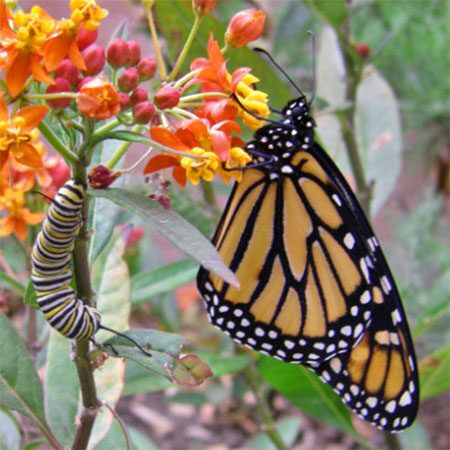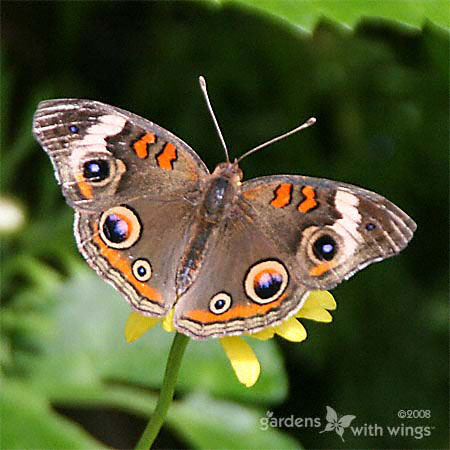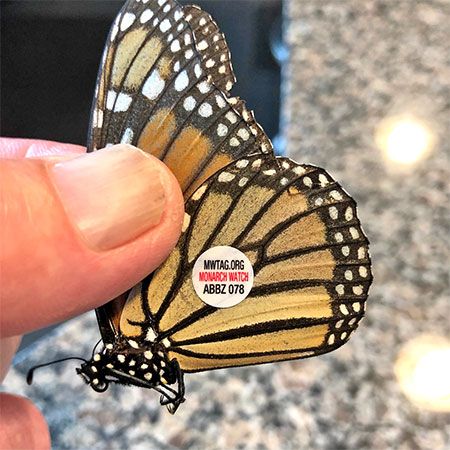by Regina Cutter Edwards – Entomologist
What is Butterfly Migration?
Butterfly migration is a rhythm in nature. It is a pattern that is repeated time and time again, year after year. A living organism does not wake up one day and think that today is the day to take a journey. It is not that simple.
There is a sequence of events that happen throughout the year combining several factors that contribute to these amazing journeys. Migration is confirmation that nature is truly amazing. This article provides a scientific look at this phenomenon that will help us admire the beauty of migrating butterflies and to understand a rhythm in nature.
Table of Contents
When Do Butterflies Migrate?
Migration is seasonal movement between locations that is not an immediate response to resources, such as food or mating. When butterfly migration occurs, there are chemical changes in the butterfly that are triggered by photoperiods and temperatures. These physiological changes prompt migratory behavior.
Butterflies Change During Migration
Research has found that in Monarchs, when the daylight hours shorten and the temperatures become cooler, the juvenile hormone (JH) production decreases. This prevents full reproductive maturity from taking place. The butterflies also become gregarious; living in groups instead of solitary. The opposite will occur when the daylight hours become longer and temperatures increase.

Behavior changes are also important in migrations. When the population movements begin, all normal behavior ceases. For example, the Monarch will not stop for nectar whenever a source is available. It will only stop when there are environmental cues, such as a southerly warm wind. This is the signal to stop and feed to store energy. If the northern cold winds are blowing, the butterfly continues to fly south, using the wind currents to help it along.
What Butterflies Migrate?
To survive the winter months, there are at least 17 species of butterflies and skippers in North America that migrate to relocate to warmer climates. These species include Clouded Skipper, Cloudless Giant Sulphur, Common Buckeye, Dwarf Yellow, Fiery Skipper, Gulf Fritillary, Long-tailed Skipper, Mexican Yellow, Monarch, Ocola Skipper, Painted Lady, Pipevine Swallowtail, Red Admiral, Sachem, Sleepy Orange, Queen, and Question Mark.

Butterflies that migrate usually have a one-way trip. Normally it is the next generation that makes the return trip. Monarchs are the exception. The Monarch generation that makes the southward journey begins the northward journey the following spring laying eggs. The following generations make it to the locations farther north.
What Butterflies Do Not Migrate?
Many butterflies have ways of overwintering in freezing temperatures and therefore do not have the need to migrate to warmer climates. For example, the Pearl Crescent caterpillar is able to stop eating and enter diapause to survive throughout winter. The Mourning Cloak butterfly overwinters as an adult while most species of swallowtails overwinter as pupae.

Where do Butterflies Migrate?
Butterflies fly south when migrating. “Where do they go?” is a question that is still for the most part unknown. It is difficult to track butterflies because there has to be a method of tagging and relocating the tagged butterflies for tracking.
3 Migration Location for the Monarch Butterfly
The Monarch butterfly, being the most studied; has been found to travel to three different locations.
- The largest eastern population travels mainly to central Mexico to a fir-pine forest.
- The eastern population that is along the Atlantic Ocean travels south into Florida. After arriving in Florida, it is unknown if they travel further, die, or have an undiscovered overwintering site.
- The western populations of Monarchs, west of the Rocky Mountains, overwinter in California on Pine and Eucalyptus trees. There is also a non-migratory population of Monarchs that live in southern Florida that are active throughout the winter months.
Read more: Monarch Migration Dates
Watch the IMAX: Flight of the Butterflies on Amazon
Some studies are being conducted with Red Admiral and Painted Lady butterflies. They are thought to migrate just south into Mexico. Other migrating butterflies have not been extensively tracked and are thought to migrate south to live with existing populations near the Gulf Coast or in the southwestern states of North America.
Read more: Red Admiral migration and Painted Lady migration.
How Monarchs Navigate
A study by Dr. Steven M. Reppert, a neurobiologist from the University of Massachusetts Medical School discovered two genes that are believed to help navigate Monarchs in their migratory journeys.
The ability to go in the correct direction is explained by circadian clocks, cryptochrome (CRY) genes, and a sun compass. A circadian clock is an internal biological clock that allows the butterfly to have a sense of time. There are two CRY genes.
- CRY1 gene is made up of proteins that are created and destroyed on a 24 hour cycle. It is light-sensitive, estimating the hours of the day by the amount of light.
- The CRY2 gene connects the time of day to the sun’s position. Within the butterfly’s biological clock, time and physical orientation to the sun is known and assists the butterfly in knowing which direction to travel.
It is still unknown how the butterfly compensates for wind or how they complete the journey to such a small remote location in Mexico. More genetic and tracking studies will hopefully provide more detailed information in the near future.
Butterfly Migration Conclusion
Migratory behavior is more fascinating when the science behind it is understood. The rhythm in nature flows together and accomplishes the unthinkable. Monarchs complete a journey that is beyond our imagination for such a small individual. They fight their way through adverse weather and wind, sometimes being thrown from their destination paths, having to reorient themselves. Despite predators and lack of food resources, they survive. They thrive and so do the generations that follow – and always come back home, completing another rhythmic cycle in nature.
Read more: Why Monarch Butterflies are Special
References:
Bitzer RJ. 2008 May 12. The red admiral and painted lady research site. Iowa State University. Accessed 2008 Sept 9.
Dingle H. 2003. Migration. Encyclopedia of insects. Ed. Vincent H. Resh, Ring T. Cardé. New York: Academic Press. p 708-714.
Farrey B, and Davis, AK. 2004 Sept. Monarch butterfly larvae (Lepidoptera: Nymphalidae) with 3 tubercle pairs in south Florida. Florida Entomologist. 87(3): 408-411. Accessed 2008 Sept 9. https://www.bioone.org/perlserv/?request=get-document&doi=10.1653%2F0015-4040(2004)087%5B0408%3AMBLLNW%5D2.0.CO%3B2
North America Butterfly Association. 1999. Butterfly questions and answers. Accessed 2008 Sept 8. https://www.naba.org
Zhu H, Sauman I, Yuan Q, Casselman A, Emery-Le M, Emery P, and Reppert SM. 2008. Cryptochromes define a novel circadian clock mechanism in monarch butterflies that may underlie sun compass navigation. Public Library of Science. Accessed 2008 Sept. 10.







